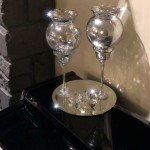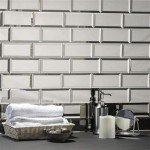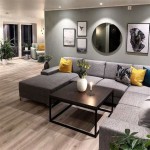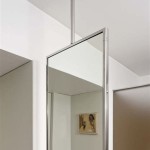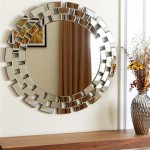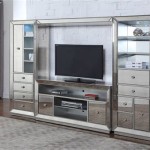Why Does a Concave Mirror Flip the Image?
Concave mirrors, characterized by their inward-curving reflective surface, possess the intriguing ability to manipulate light rays in ways that produce both real and virtual images. One of the most noticeable effects is the apparent flipping or inversion of the image under specific conditions. Understanding this phenomenon requires a closer examination of the principles of reflection and the geometry of concave mirrors.
The fundamental law governing the behavior of light at a reflective surface is the law of reflection. This law states that the angle of incidence, the angle between the incident ray and the normal to the surface at the point of incidence, is equal to the angle of reflection, the angle between the reflected ray and the same normal. This simple principle, when applied to the curved surface of a concave mirror, leads to complex and fascinating image formations.
A concave mirror's shape can be considered as a segment of a sphere. The center of this sphere is termed the center of curvature (C), and its radius is the radius of curvature (R). The midpoint of the mirror's surface is the pole (P), and a line passing through C and P defines the principal axis. These points and lines are crucial for understanding image formation.
To understand image inversion, consider an object placed beyond the center of curvature. Light rays emanating from the top of the object strike the mirror's surface at various points. Applying the law of reflection to each of these rays reveals that they converge at a point below the principal axis. Similarly, rays from the bottom of the object converge above the principal axis. This intersection of reflected rays forms a real, inverted, and diminished image between the center of curvature and the focal point (F), which is the midpoint between C and P.
The inversion occurs because the rays from the top of the object, after reflection, are directed downwards, while rays from the bottom are directed upwards. This crossing of rays leads to the image appearing upside down relative to the object. The image is considered "real" because the light rays physically converge at a point, allowing the image to be projected onto a screen.
As the object moves closer to the mirror, the image changes in size and position. When the object is placed at the center of curvature, the image is also formed at the center of curvature, real, inverted, and the same size as the object. This signifies a unique position where the image faithfully reproduces the object's orientation, albeit inverted.
When the object lies between the center of curvature and the focal point, the image continues to be real and inverted, but it is now magnified and located beyond the center of curvature. The closer the object gets to the focal point, the larger and further away the image becomes.
A dramatic shift occurs when the object is placed at the focal point. In this scenario, the reflected rays become parallel and do not converge. Therefore, no real image is formed. Instead, the light rays appear to diverge from a point behind the mirror, creating a virtual image.
When the object is placed between the focal point and the pole, the image formed is virtual, upright, and magnified. The reflected rays diverge, and the image appears to be located behind the mirror. The virtual image is not a result of the actual convergence of light rays but rather the extension of the diverging reflected rays backward to their apparent point of origin. This explains why a virtual image cannot be projected onto a screen.
The transition from a real, inverted image to a virtual, upright image as the object moves within the focal length highlights the significant role of the focal point in shaping the image characteristics. The focal point acts as a crucial boundary, dictating whether the reflected rays converge to form a real image or diverge to create a virtual one.
The magnification and orientation of the image produced by a concave mirror are not arbitrary but are governed by precise mathematical relationships. These relationships, derived from the principles of geometrical optics, relate the object distance, image distance, focal length, and magnification. They provide a quantitative framework for predicting the image characteristics for any given object position.
Understanding the interplay of these factors allows for the effective utilization of concave mirrors in various applications. From reflecting telescopes that capture distant starlight to shaving mirrors that provide magnified views, the ability of concave mirrors to manipulate light and form images plays a critical role in scientific instruments and everyday objects.
Objects In The Mirror Are Actually Images Article Khan Academy
If A Concave Mirror Forms Real Inverted Image In Front Of The Then How Can We See Our Behind Like Spoon Quora

Distorted Images In Curved Mirrors Stem Activity
Why Do Some Mirrors Flip The Image Upside Down Quora
Objects In The Mirror Are Actually Images Article Khan Academy
Why Can We See Our Inverted Image Inside A Concave Mirror When The Is Formed In Front Of It And Not Behind Quora
Understanding Reflection Of Light On A Concave Mirror Page 3

Curved Mirror Equations Nexus Wiki
When Does A Concave Mirror Form An Erect And Magnified Image Quora

Difference Between Concave And Convex Mirror With Comparison Chart Circuit Globe

